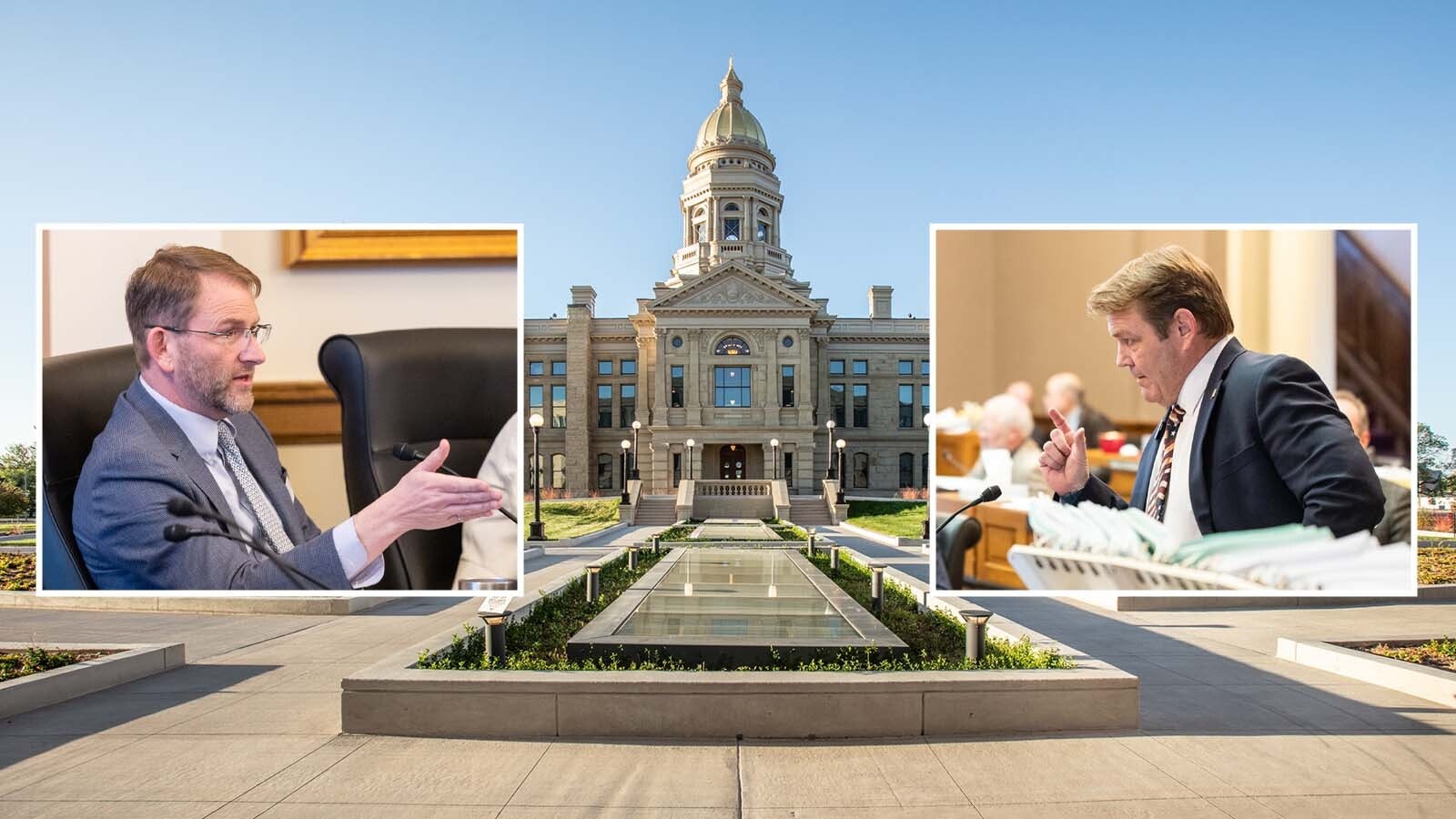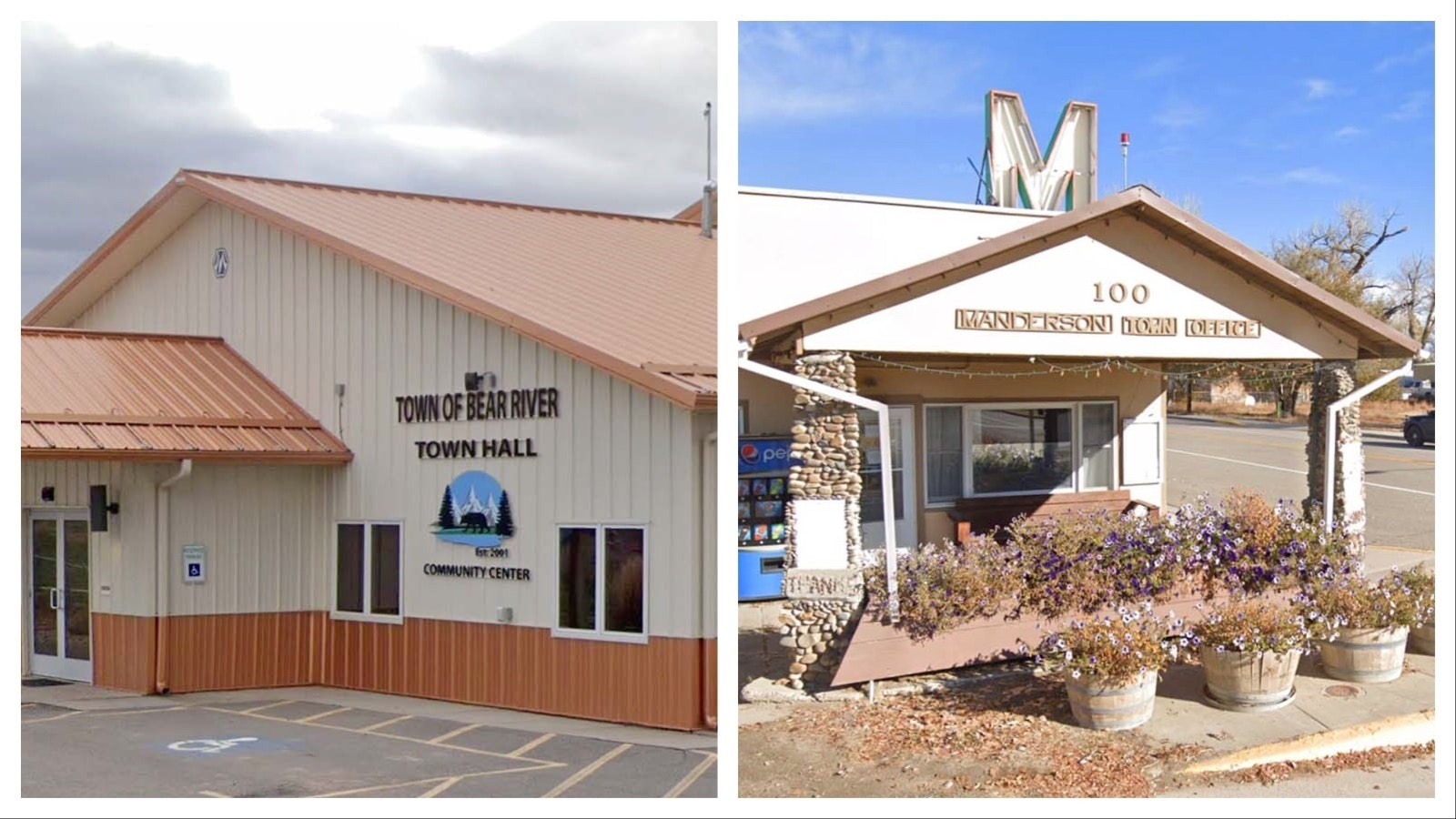Ray Peterson served as a state senator for 13 years, from 2005-2018. In this column, he shares his thoughts on his 27 years of public service.
Public Service
I hesitated to write this article but decided to share my story of public service for only one reason, to better inform our citizens. This certainly is not done with any self-promoting agenda, as I do not have any future plans to run for any public office. My 27 years of public service has come to an end. But I think my story could be used to improve our understanding of the challenges of public service. Perhaps this article may even convince someone to run for office or volunteer their time or just get involved.
I was first elected to the Cowley town council in 1986. I served six years and enjoyed the opportunity to learn about town government while offering my input into community projects and working with others. It was exciting and fulfilling to see a project through, from concept to planning to completion.
While working on community projects, I was introduced to county concerns. I had ideas for the county and saw needs that I thought I could help with. I was elected to the Big Horn County Commission in 1992, where I served eight years dealing with budgets, a new jail, a new dispatch system, improved roads and public land issues.
State Involvement
I was appointed to the Senate in 2005, where I was appointed to the Appropriations Committee and served for six years.
After my years on the Appropriations Committee, I was given the assignment to chair the Senate Revenue Committee. As the Senate president put it, “You’ve seen how we spend the money, now you need to know where it comes from.” This taught me another valuable lesson in that I realized our Legislature was an institution that trains its own leaders to promote continuity and knowledge to ensure that the best decisions are made on the state’s behalf by our elected representatives.
I will also mention that the pressure is unreal. There are no simple votes on the floor of the Senate. My wife would always notice when I returned home after a session that I had lost both weight and a little more hair.
My Last Year
As I gained experience and seniority in the state Senate, more responsibilities were assigned to me. I was serving on the Management Council, a number of select committees, the Labor and Health Committee and chaired the Senate Revenue Committee.
Added to this mix was the fact that our revenue projections were down and we were contending with a $1 billion shortfall, which meant that we had lost 25 percent of our projected biennial revenue. Assignments were made to look for ways we could increase our revenue in Wyoming, which fell squarely on the Revenue Committee. We were told to bring every revenue generating idea to the Legislature for consideration during the upcoming session.
We also knew that our expenditures would need to be reduced. We could not tax our way out of this downturn without looking at reductions to our budget as well. The assignments were made to form a recalibration committee to look into possible ways we could reduce the education funding model. I was assigned to that committee. My summer was spent on taxation issues and budget cuts to education.
I remember admonishing our committee to have the courage to bring these tax bills to the floor for consideration, even if it meant that some of us would pay the price politically. I would imagine that most on the committee voted against the proposed revenue bills during the session, but we had done our job in bringing options to the floor.
Because we had cash reserves, we elected to use them to cover the shortages, which meant no taxing proposal passed that session, but the studies were completed and the information was current for the Legislature to consider, so the Revenue Committee had completed its assignments.
The Recalibration Committee had even a tougher time in meeting deadlines, hiring consultants, gathering information and then making recommendations to the full Legislature during the upcoming session.
You can imagine the popularity of this committee. As an example, the business I worked for was boycotted by some schools around the state because of my perceived stance against education. I really didn’t know I had an anti-education stance, but there were a lot of people who thought I and a few others were public enemies to education.
Articles in the papers that portrayed the Senate wanting to gut education seemed to be the flavor of the day. But we had a budget to balance and the year before, we had cut the Health Department by almost $100 million, 10 percent of its biennial budget. Now our attentions were turned to the largest state budget, K-12 education.
Like the Revenue Committee, the Recalibration Committee completed its job and made recommendations for reductions based on the findings of our contracted consultants. The committee members were not in total agreement and disagreed on where cuts should be made. But one thing everyone understood was that cuts to the K-12 funding model were going to be made, it was just a matter of how much.
My Last Session
I was asked to sponsor the bill proposing reductions to the K-12 funding formula. I agreed to sponsor the bill knowing the subject and having spent the summer listening to the consultants and the recommendations. I also thought that I could use this bill to ensure that my concerns with funding for our smaller schools would be protected.
I had shared with other senators, over the years, that I felt that the funding model was flawed in favor of the larger schools. Although this bill would not be a popular bill to sponsor, it would put me in the chair to control the outcome. My first amendment was to slash $100 million from the proposed funding reduction of $140 million.
The news media continued to refer to the bill as cutting $140 million from our schools up to the day it died in the house. Although the reporting was not accurate, the bill was now in a form and an amount that I felt our schools could deal with. The reductions were in areas that would not affect the classroom or salaries or even the quality of our schools in the least. These reductions were recommended by consultants and would be phased in over three years, just as our school administrators had requested.
Three small schools stood out as taking larger hits to their budgets than all the other school districts. Where all other schools were presented with reductions of 2 percent to 2.5 percent over three years, these three smaller schools faced 10 percent to 12 percent reductions. I now had evidence that some of our smaller schools were taking a bigger hit than our larger schools.
To correct this, my last amendment to the bill was to provide a ceiling that would protect these smaller schools from unfair reductions in comparison to the other schools. I remember sitting down at my computer to check my emails after the amendment passed on the floor of the Senate. They were pouring in from all over the state telling me how bad a person I was to cut education, but one caught my eye as it was from a superintendent back home telling me that he had sent out a letter to all of his teachers informing them I had broken my promise to the smaller schools and was gutting their district’s money. I, of course, was not happy about the accusations and made every attempt to respond and explain what I was trying to do with this bill, but I’m sure my explanation fell on deaf ears.
The bill passed the Senate with a proposed $40 million reduction plan over three years and with my amendment.
The House, meanwhile, had its own reduction bill, which was set cuts at $15 million. The Senate file was quickly killed in the House Education Committee. The Senate took the House version and deleted most of the House wording and inserted the Senate file wording and the reduction amount of $40 million. This is what led to the Conference Committee where the House and Senate agreed on a $37 million reduction plan to the K-12 funding formula — $3 million short of my original Senate file but with my amendments intact. The House was hailed by the media as the saviors of education that session.
I was unseated in the August primary.
My Take on Things
After the session was over, the Senate president asked If I was going to be all right back home as I was up for re-election. I told him that I should be okay as I would get back and explain my intentions and work on the bill to the educators back home. What I was not counting on was that the educators did not want to listen to an explanation and did not attend any of my meetings where I offered a report of the session and the bill that I had worked on.
Our favorite lobbying group, the Wyoming Education Association, had invested time and money to see that I was unseated. I don’t really know what it was telling the voters in Senate District 19, but I know it wasn’t the fact that I voted for teacher salary increases each time they were introduced over the previous six years, or that I fought to reinvest general fund money into the teachers’ pension fund after we lost a good portion of it in 2008, or that I voted to increase spending on additional new school construction.
What the WEA saw in me was a threat. I had knowledge and education of the budget and the education funding formula as well as the seniority to present and push through legislation that would have threatened their plans for continued increases. I was asked to be the next Majority Floor Leader in the next session which would have made me president of the Senate in 2021. I would have also served as the chairman of the Appropriations Committee in 2019-20. The WEA was going to have none of that.
Conclusion
Now back to my reason for sharing my story. I’ve asked myself many times what I might have done differently to ensure my own re-election. I could have kept my distance from those issues by not accepting those difficult assignments. But considering all the training and cost of my public service education over the years, I would think that running away from those issues would have been self-serving rather than doing what I was elected and trained to do.
I remain concerned about what happened and could happen to another public servant. To allow the media and a union to dictate what we think of a candidate is foolish and dangerous. The overwhelming problem did not go away with my replacement.
The end result of the 2 percent or $37 million reduction over three years to our K-12 education funding? Each of the four school districts in Senate District 19 gave raises shortly after the budget session was over. New school construction and building maintenance continues. The K-12 education budget continues to grow each year and the WEA continues to be one of, if not the, strongest employee unions in our state.
We need to be better than this, Wyoming. Media with an agenda other than fair reporting is dangerous. Unions that control elections are dangerous. We should protect openness, transparency, honesty and integrity to our political process. And certainly, the more knowledge we have, the better we are all served.





